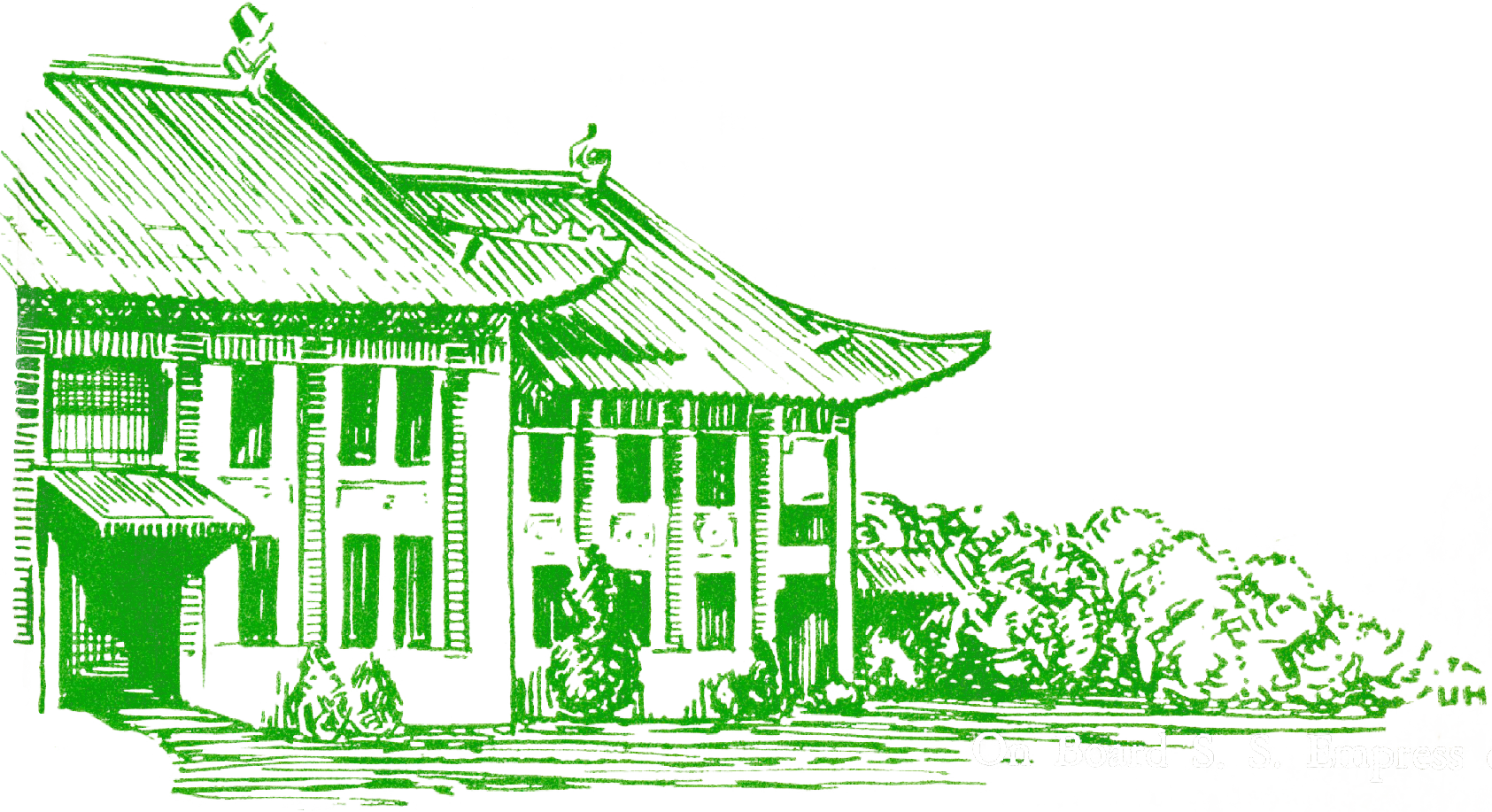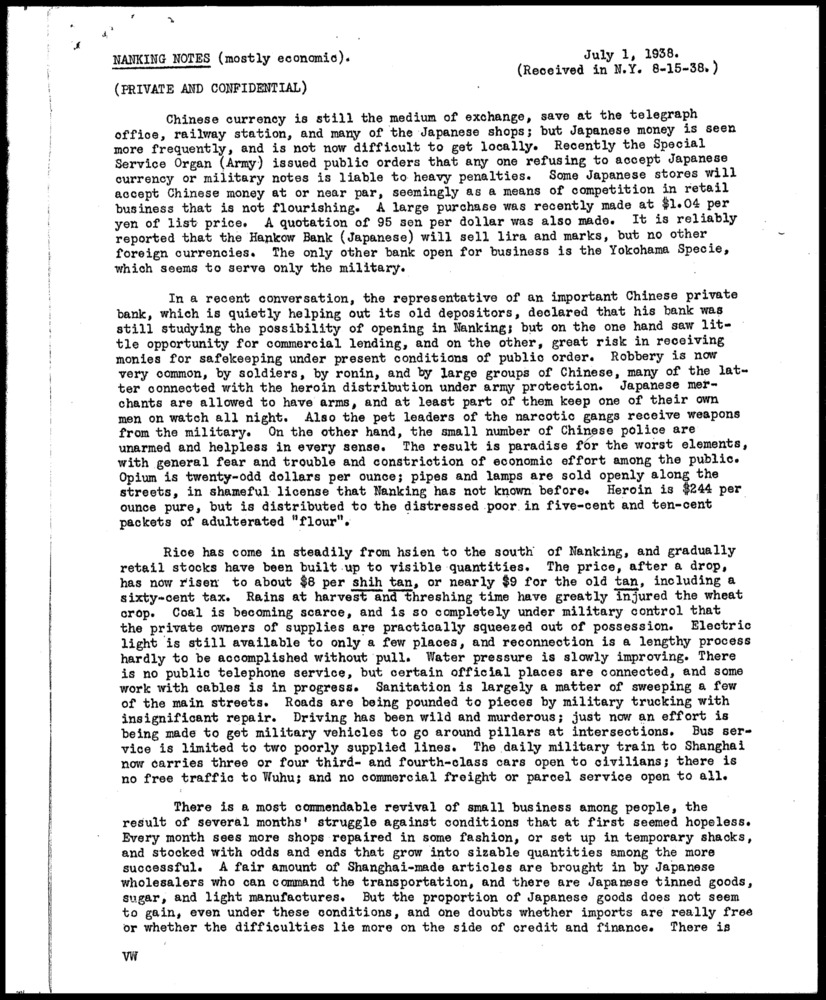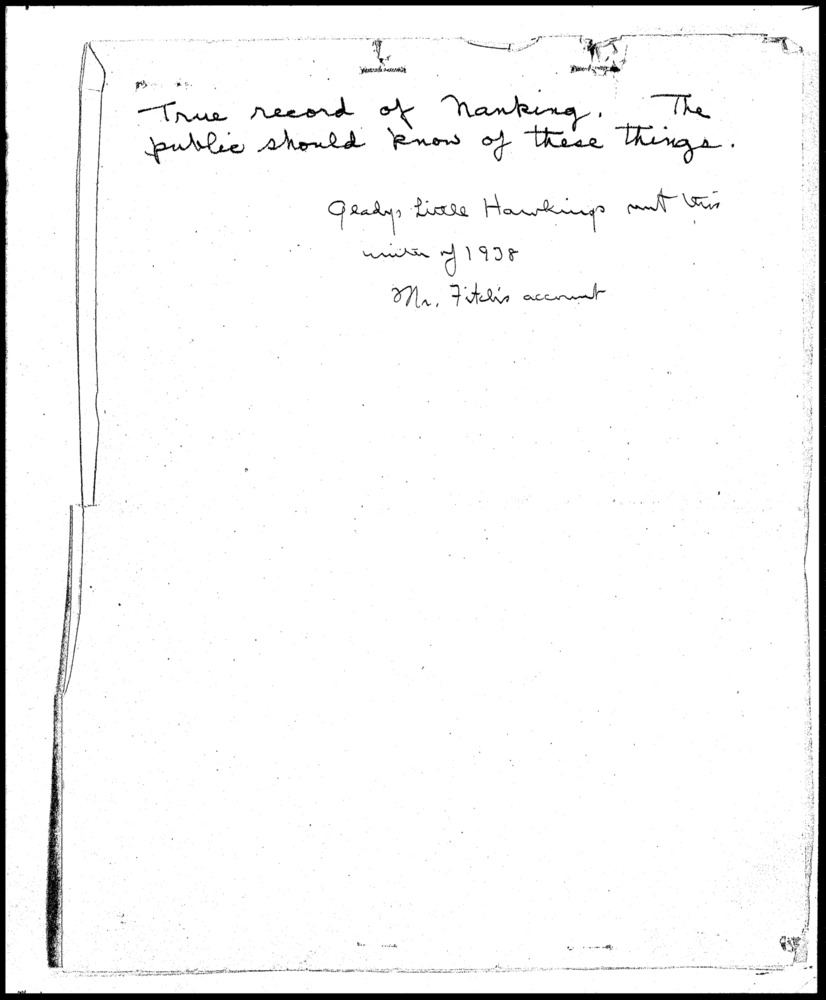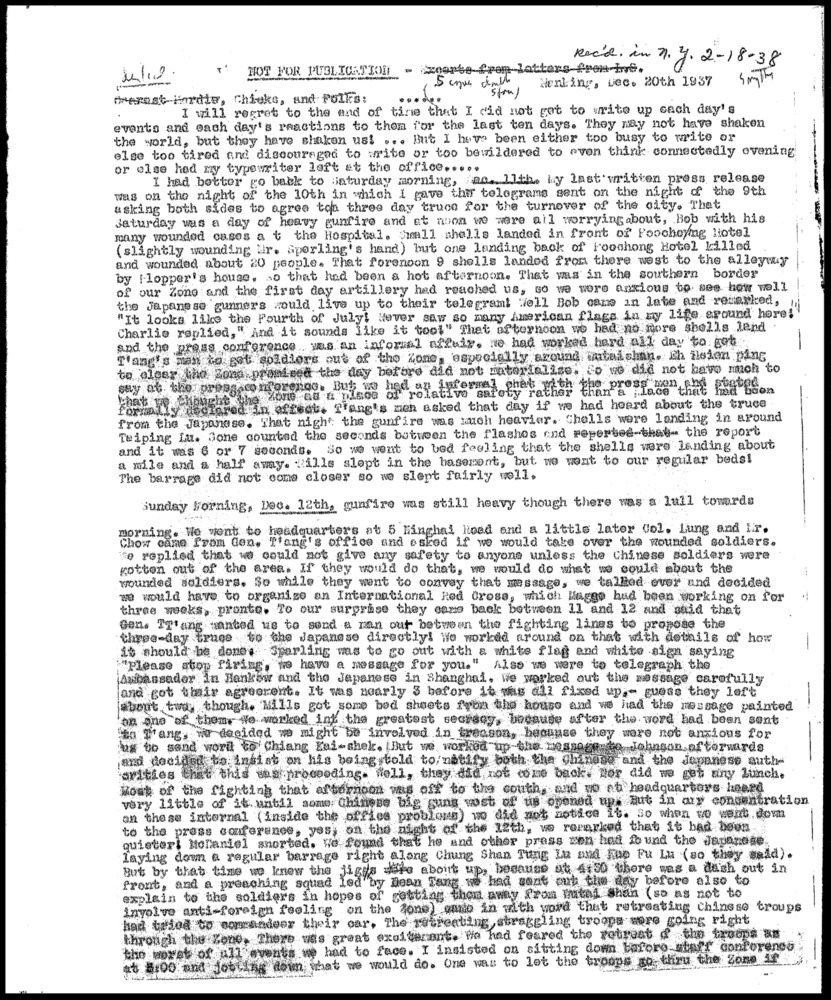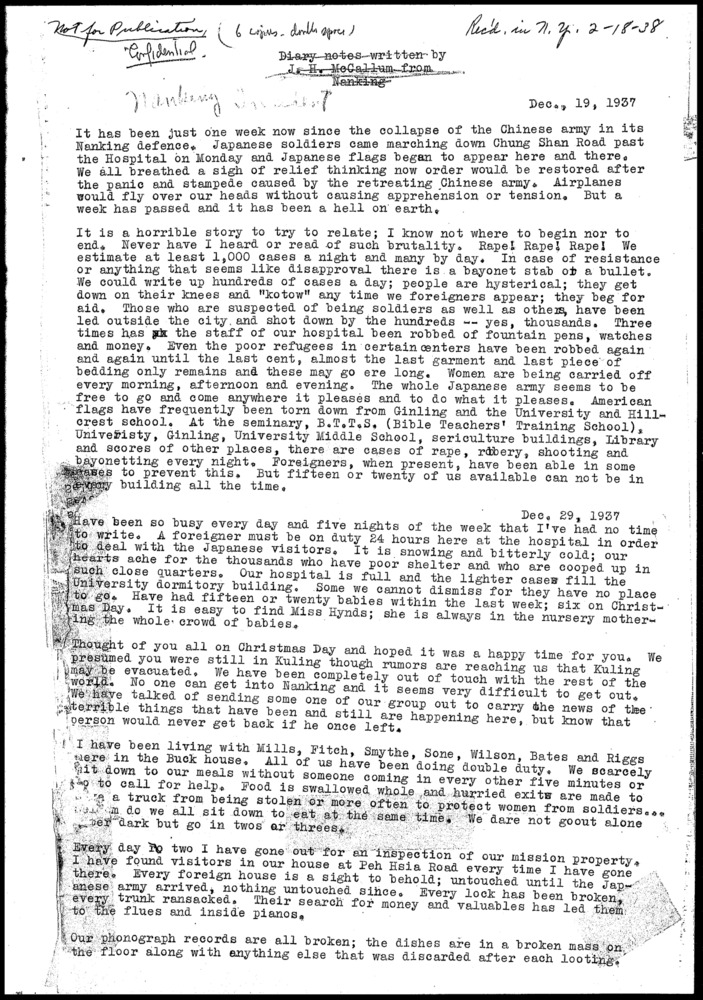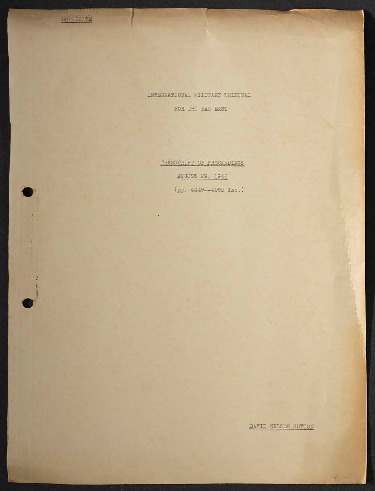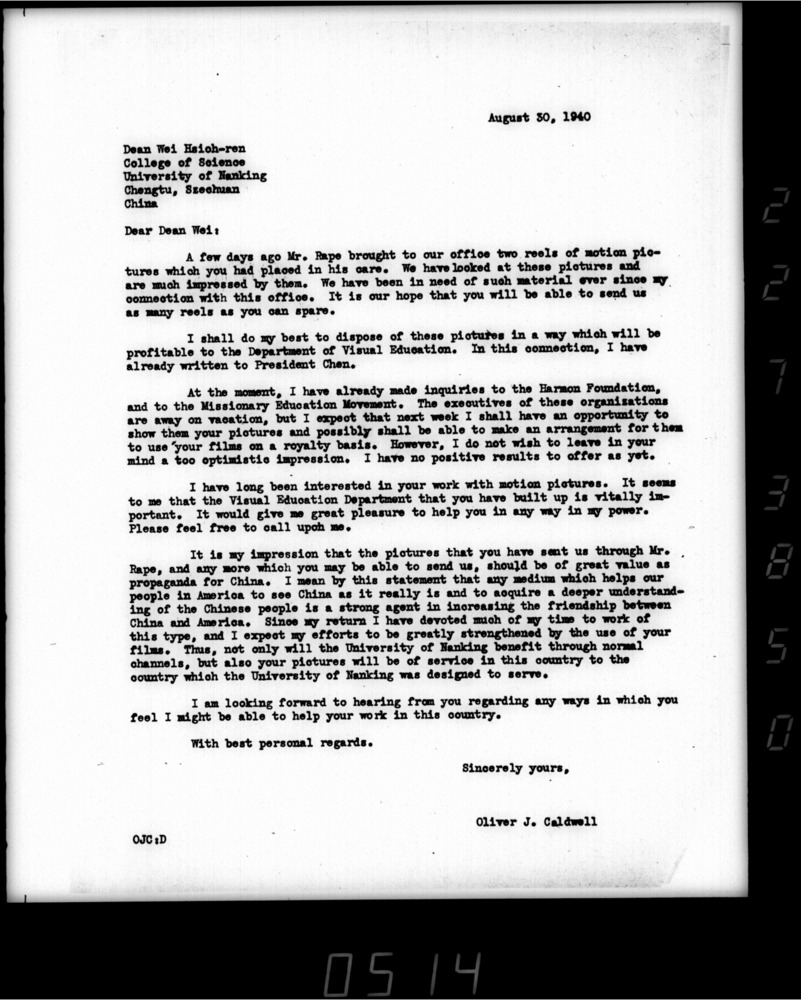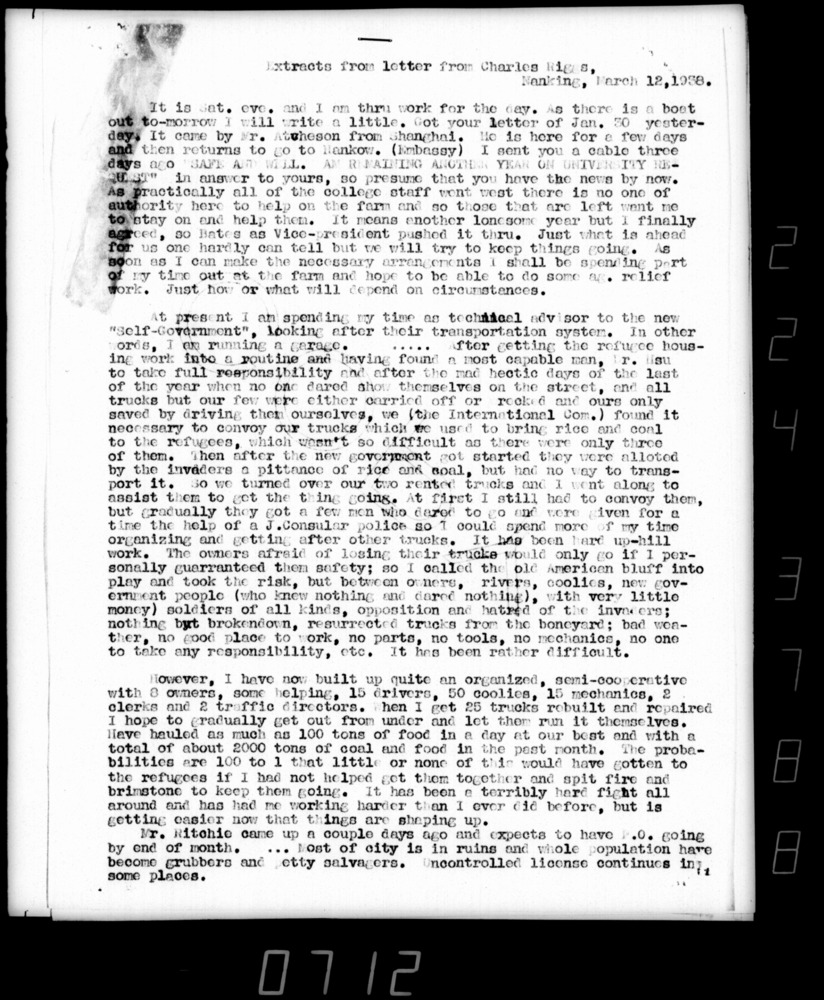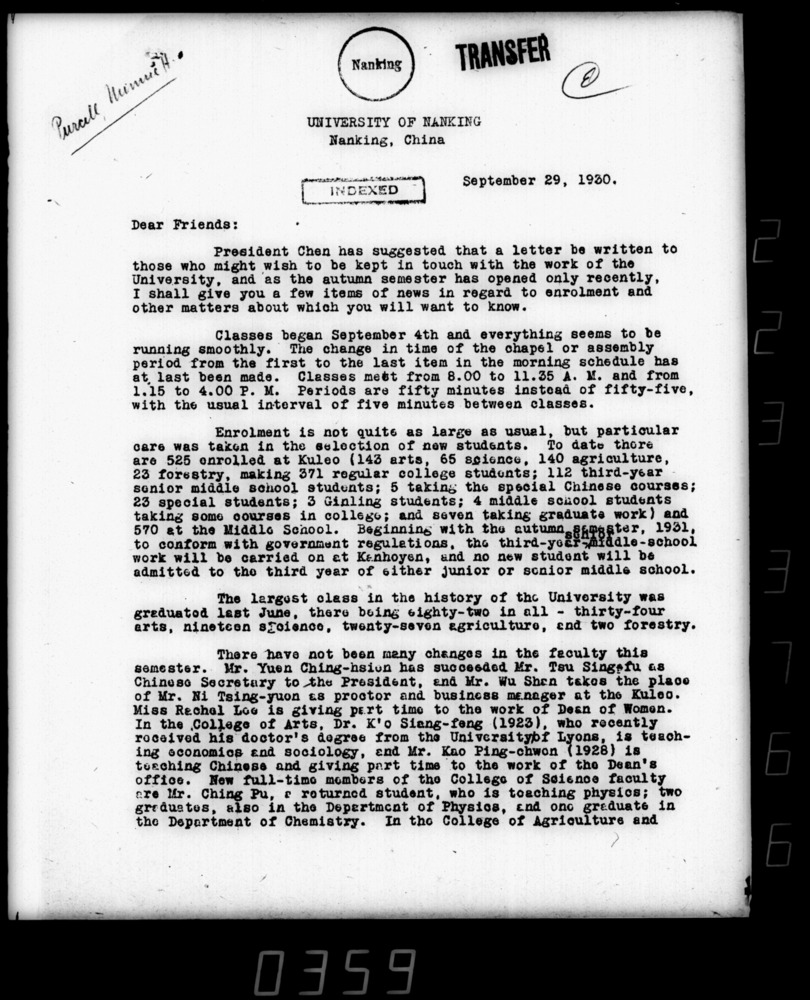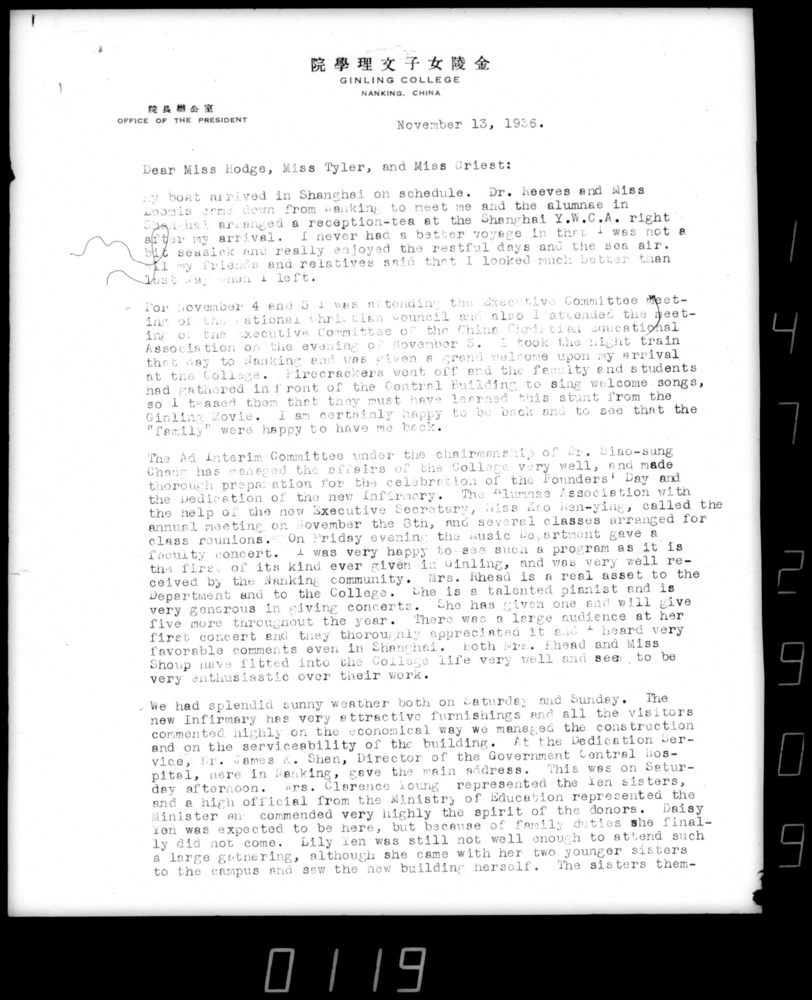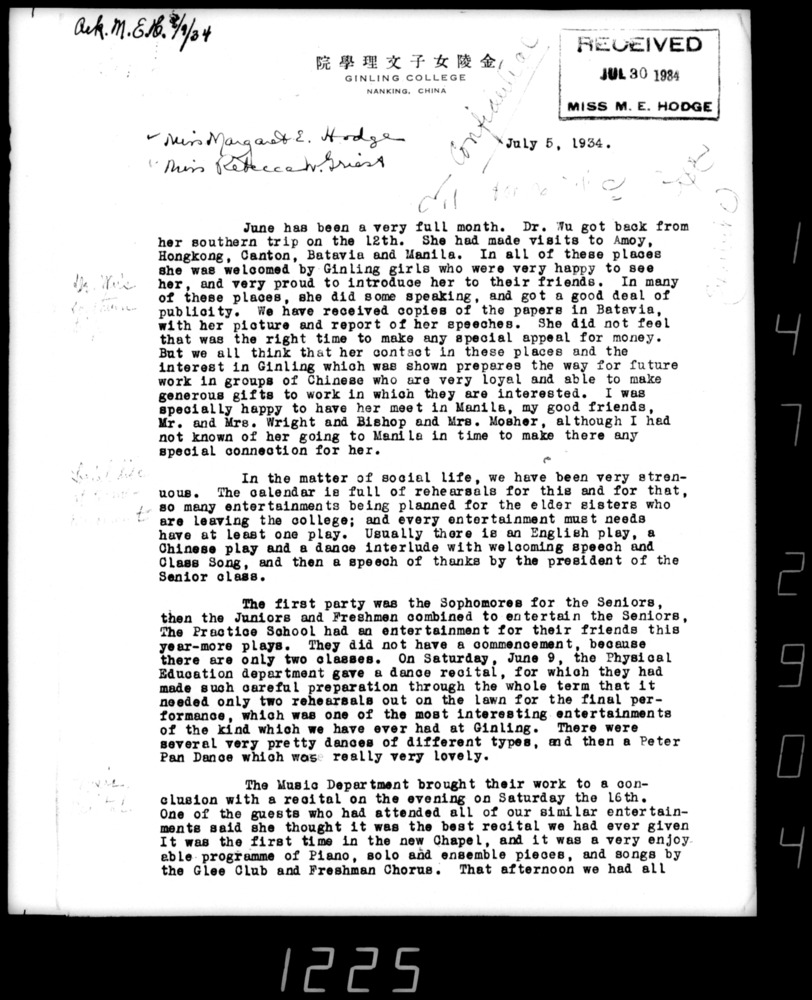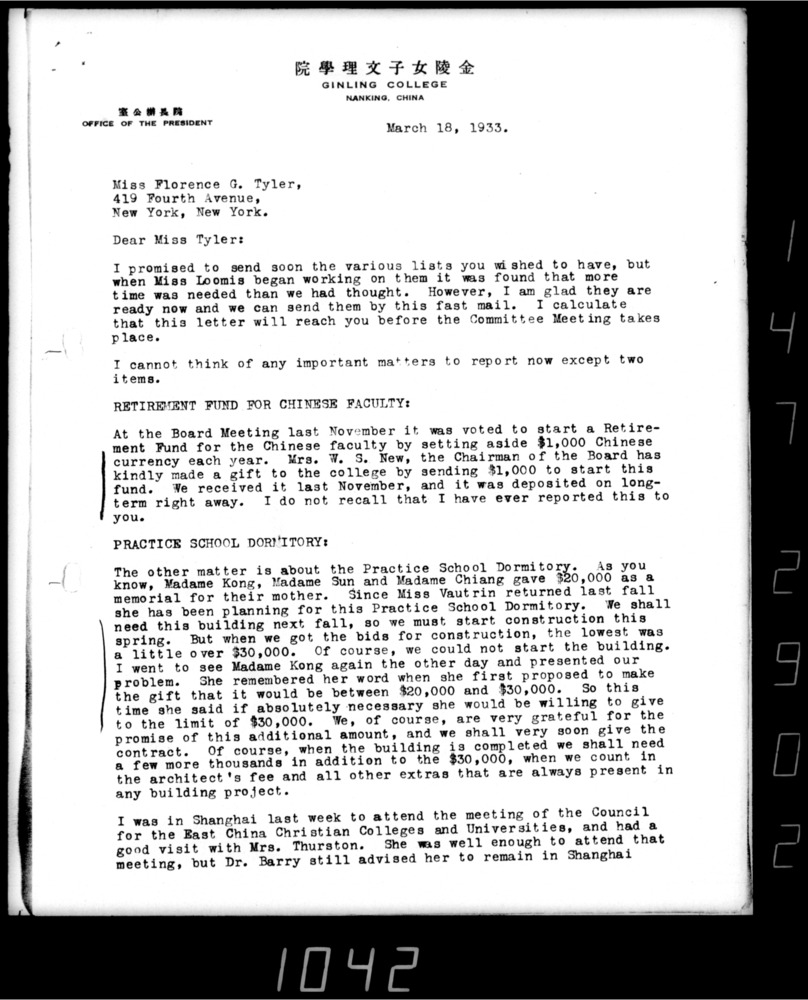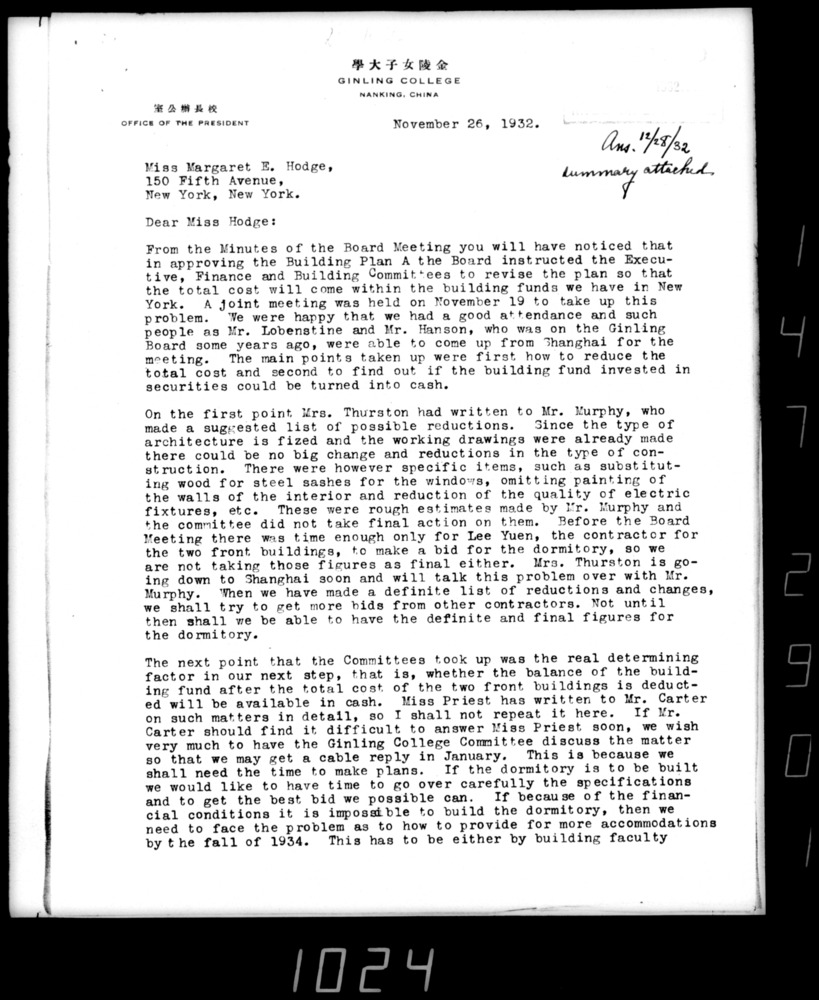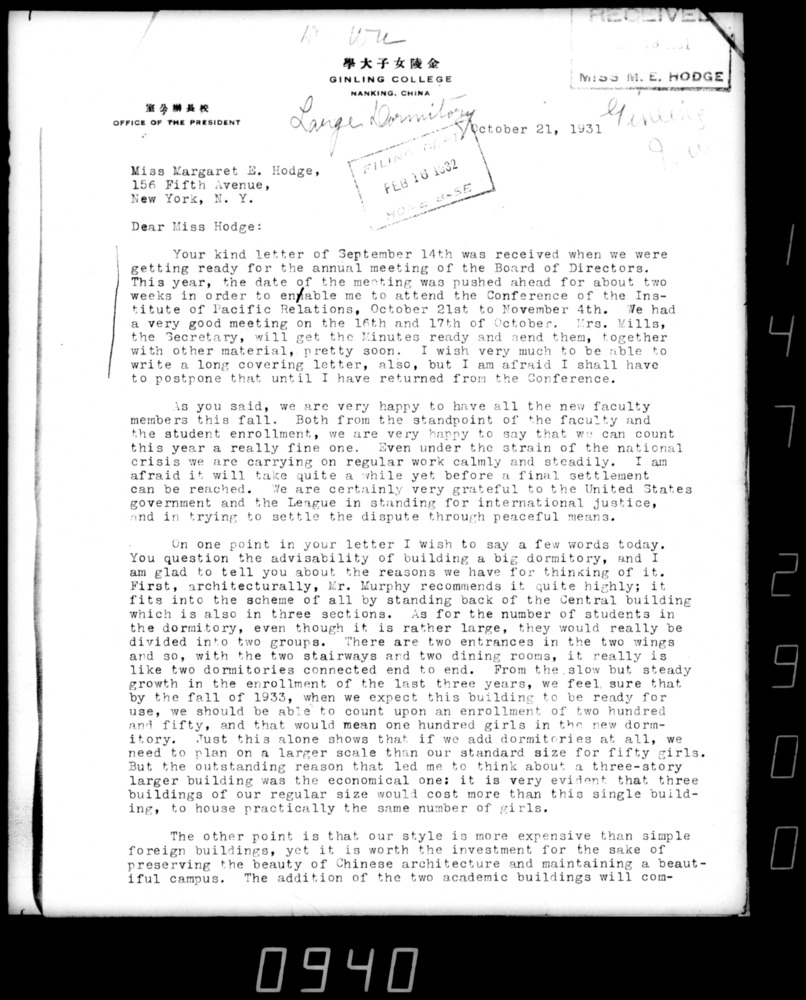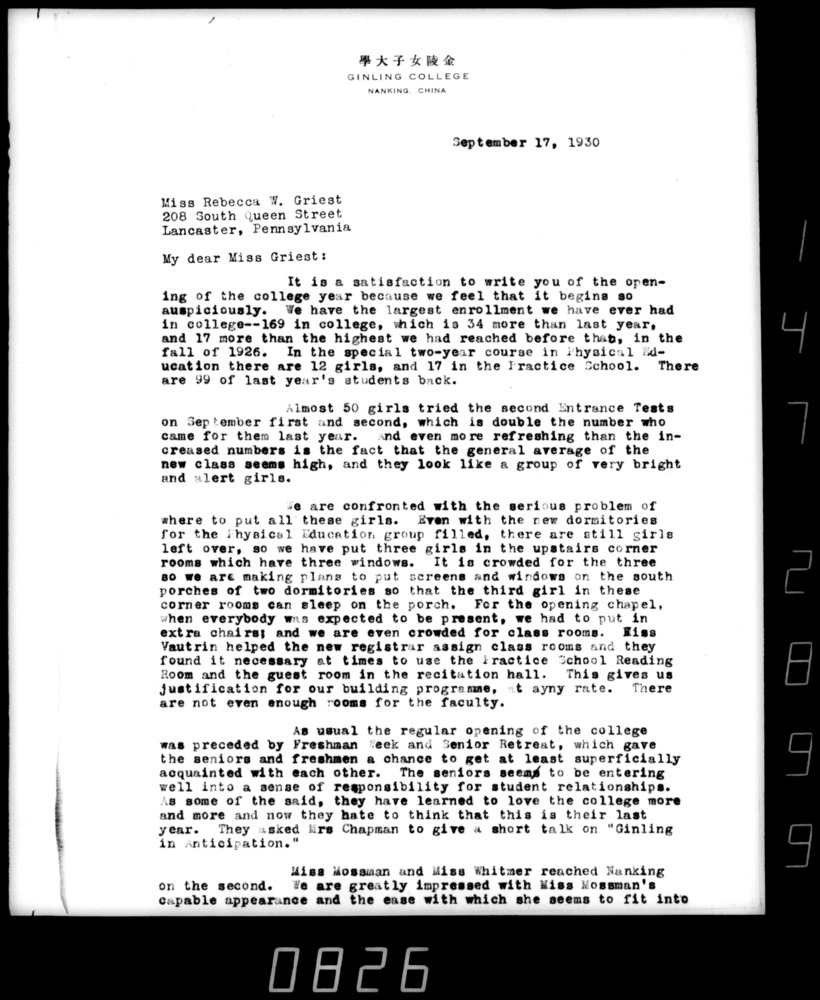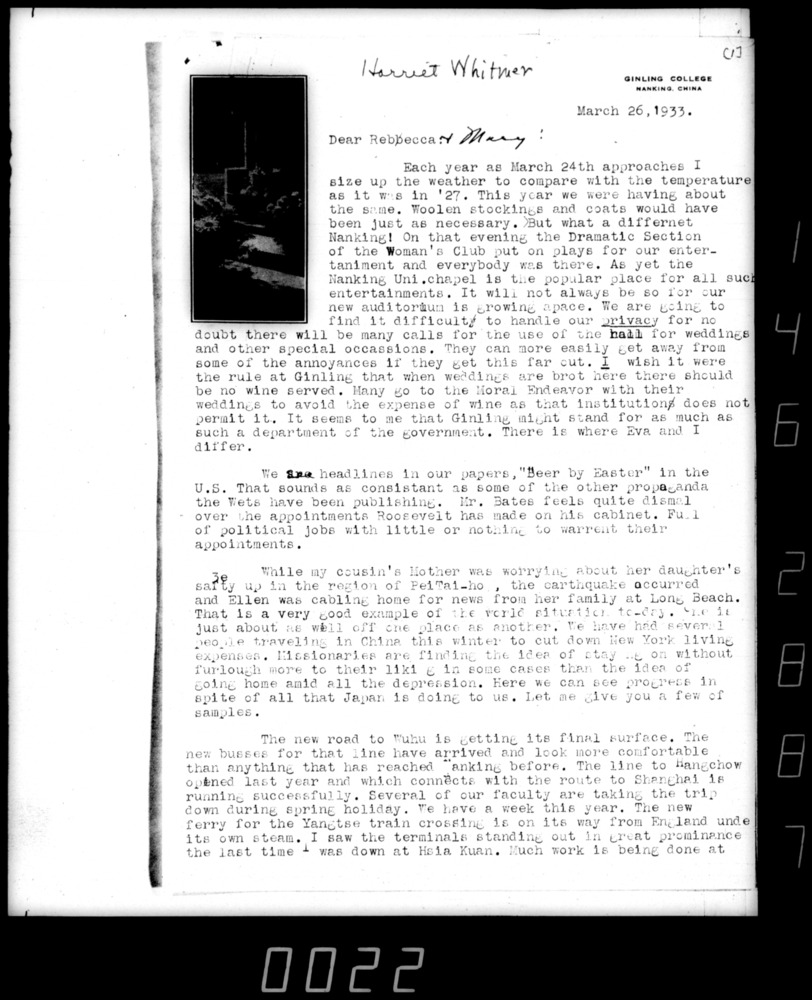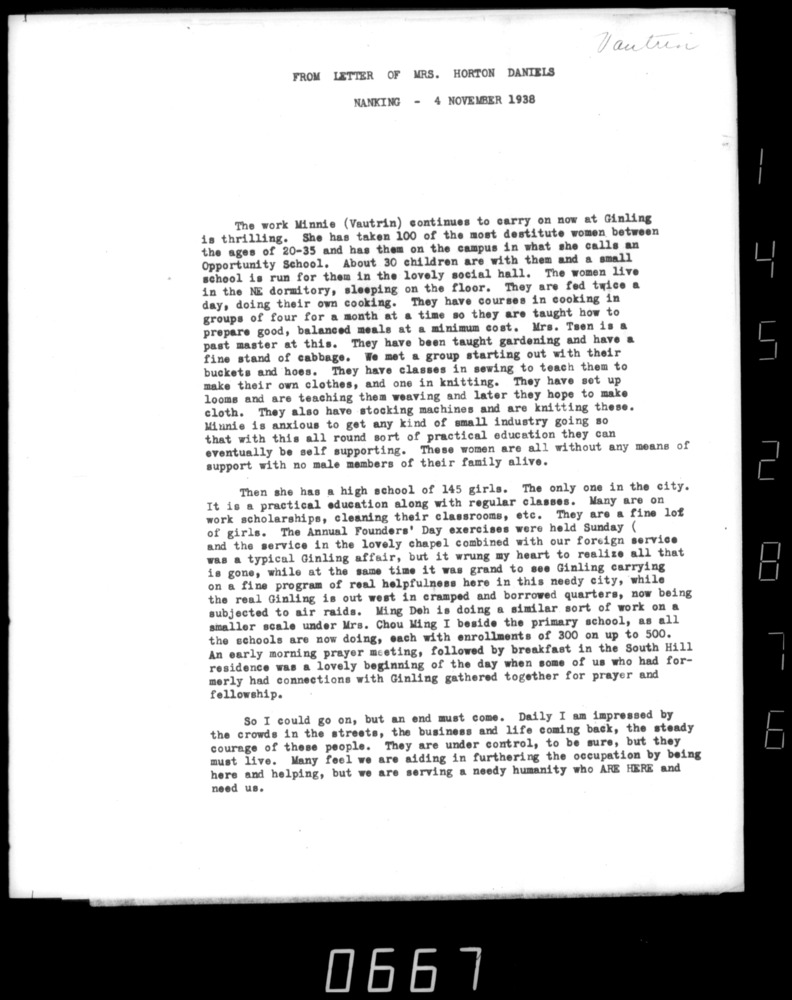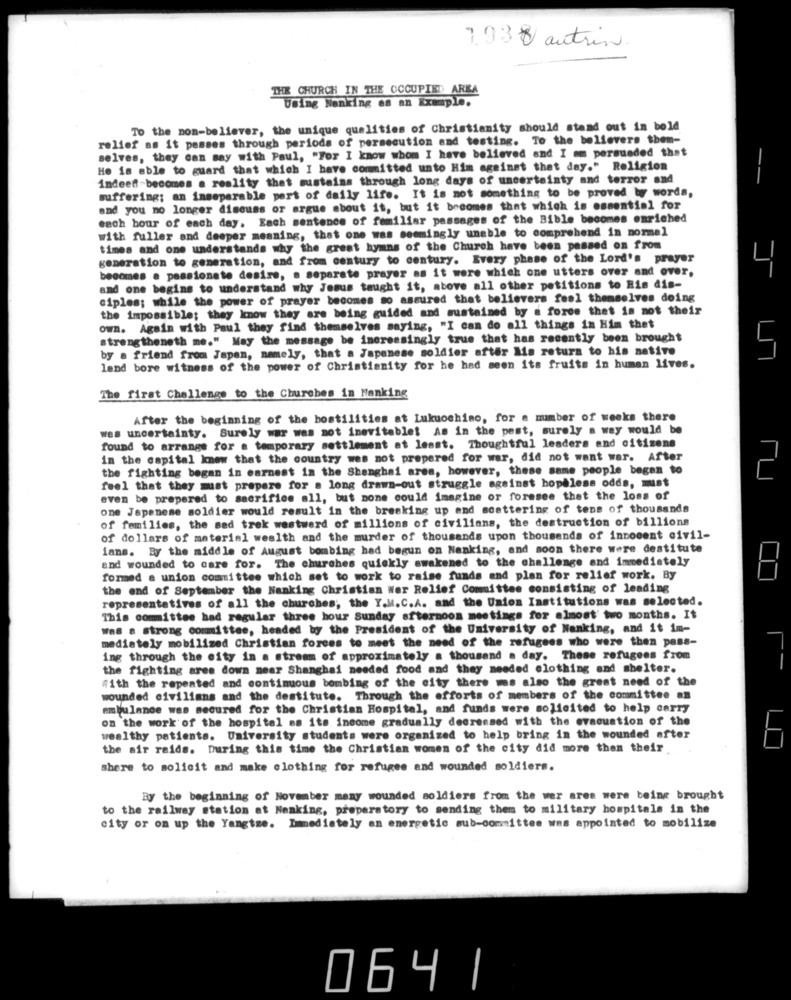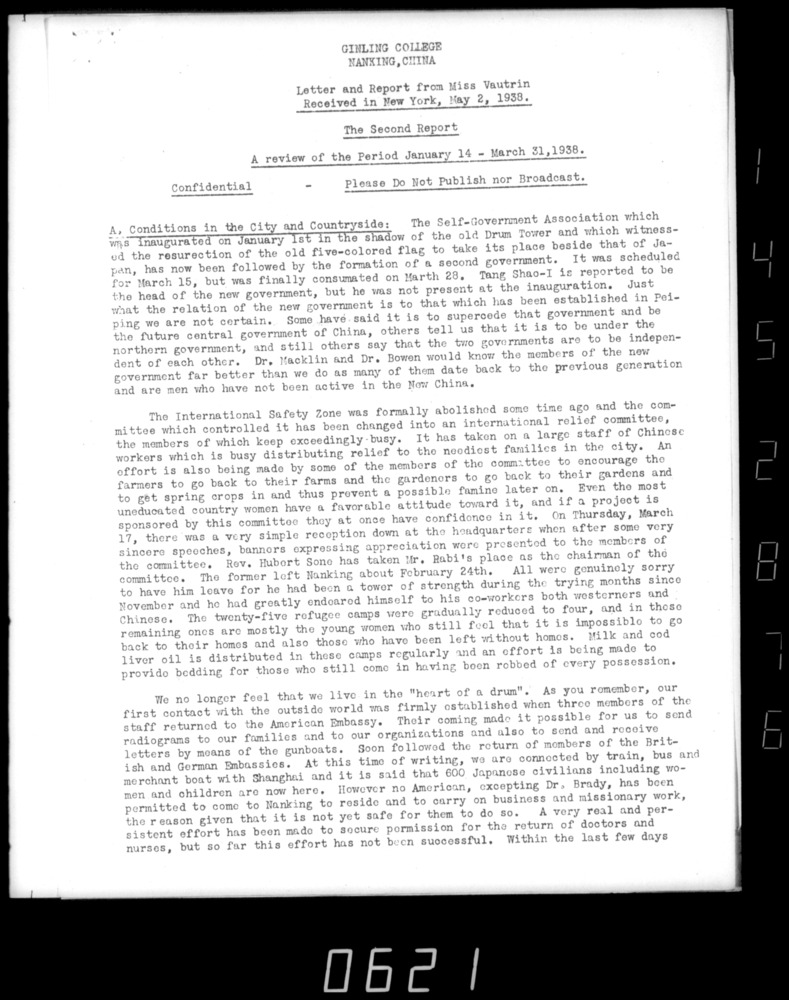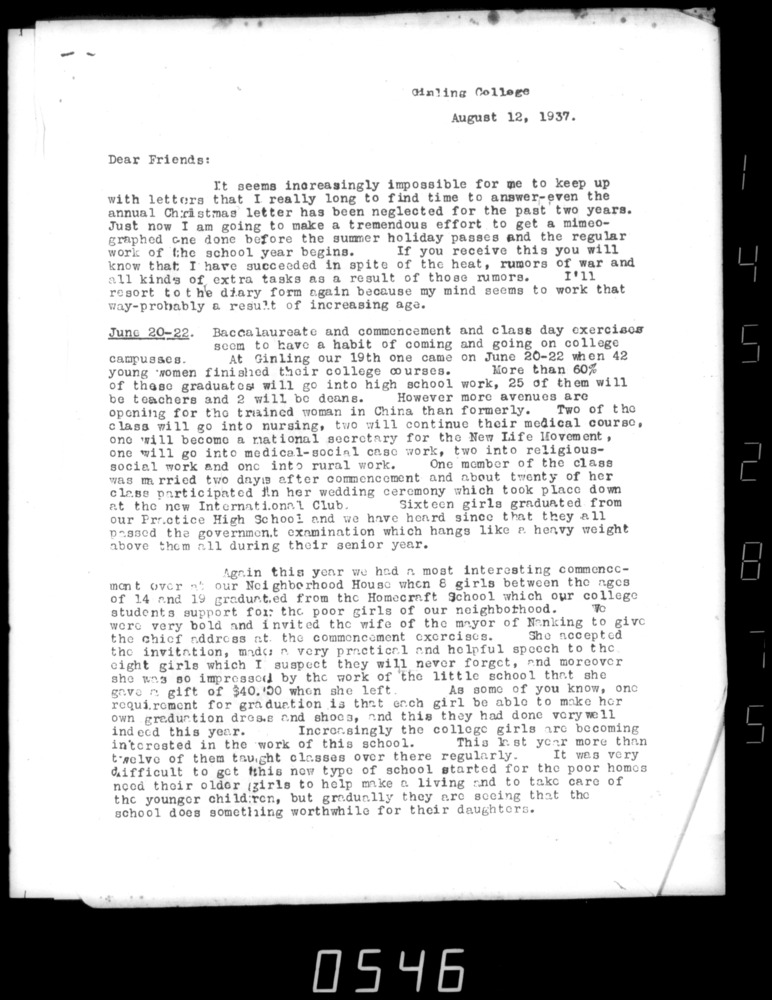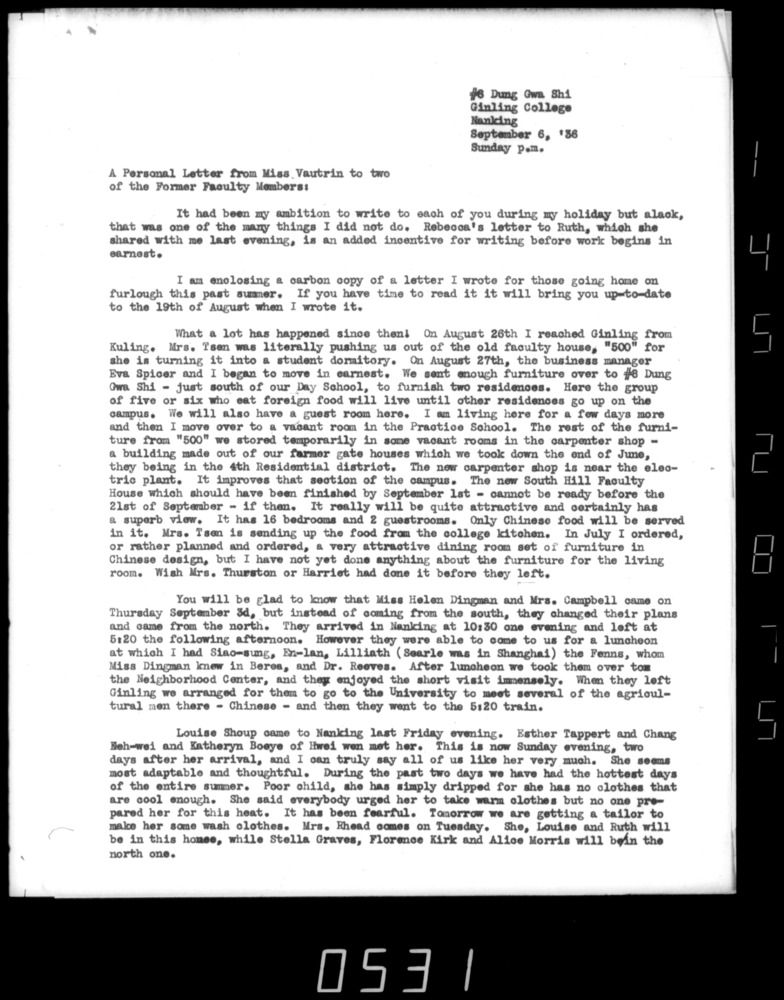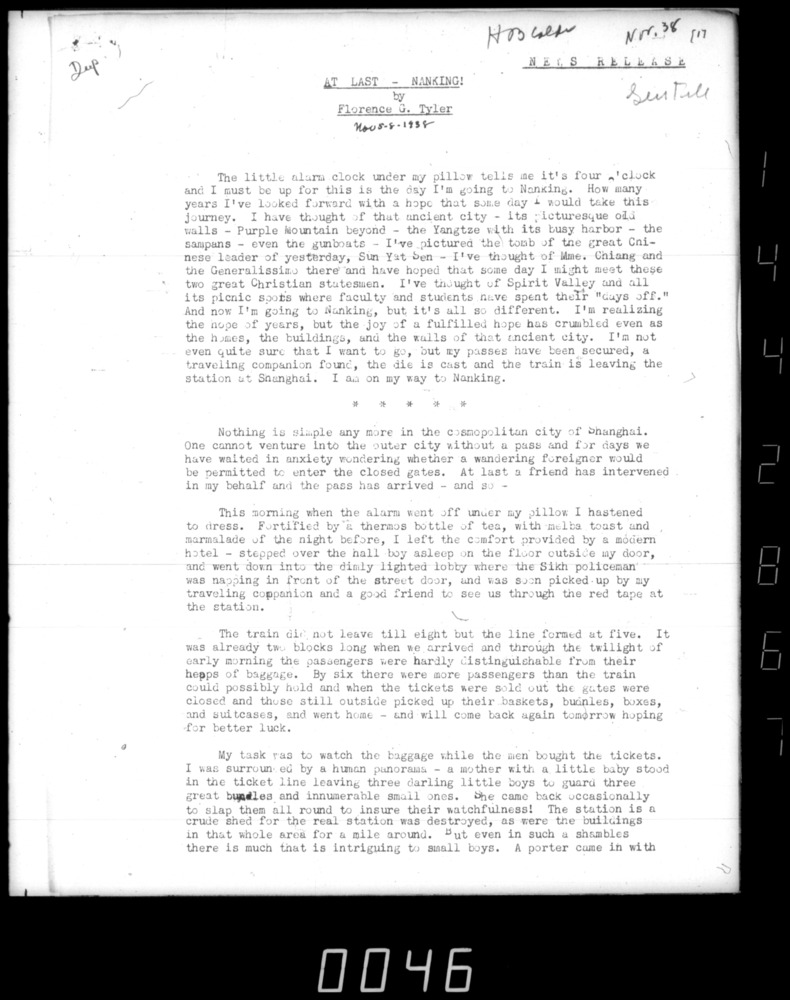"Nanking Notes (mostly economic)"
Brief report on the economic conditions in Nanjing in the summer of 1938, roughly six months after the Nanjing Massacre. The author(s) emphasize the urgent need to address the problem of widespread poverty and unemployment – circumstances which the author(s) deem responsible for the rise in crime and drug distribution. One positive, however, is the "most commendable revival of small business among people" despite the "hopeless" conditions. The price of staple goods such as rice and damage to infrastructure are also surveyed.
Account of the Japanese invasion
Account of the events and atrocities which occurred during the Japanese invasion of Nanjing in the winter of 1937. Fitch's account "record[s] some of the more important events of this period" from December 10th to December 24th as "jotted down in [Fitch's] little dairy [sic]." He recounts how the Japanese initially insisted upon the removal of Westerners from Nanjing as they "wanted no observers" and the problems with enforcement of the Safety Zone. The document is an in-depth account of invasion, covering military movements, backchannel talks, atrocities, and humanitarian assistance.
Excerpts from letters, December 20, 1937 to January 9, 1938
Excerpts from letters from Lewis S. C. Smythe regarding the events of the Nanjing Massacre. Smythe was an American Christian missionary who taught at the University of Nanking. He chose to remain in the city during the invasion, helping other Westerners establish and run the Safety Zone. The excerpts contain detailed and often graphic descriptions of atrocities committed by Japanese soldiers against civilians that were witnessed by Smythe.
Diary Notes, December 19, 1937 to January 13, 1938
Transcribed excerpts from J. H. McCallum's diary during the Nanjing Massacre. McCallum was an American missionary with the United Christian Missionary Society who opted to remain in Nanjing during the Japanese invasion to help protect the civilian population. The diary entires included in the document discuss the efforts of the Safety Zone Committee to establish refugee camps. Instances of sexual and physical violence which occurred inside the Safety Zone and on the Mission's property are also described by McCallum.
Transcript of Proceedings of the International Military Tribunal for the Far East
Transcript of the proceedings of the International Military Tribunal for the Far East on August 29, 1946 (pp. 4449–4565 inc.). Although the Tribunal was designed to address all atrocities committed by Japan during the war, this days proceedings were focused on atrocities committed in Nanjing.
Letter from W. Reginald Wheeler about proposed improvements to the University's faculty residences
W. Reginald Wheeler, a member of the Board of Founders at the University of Nanking, addresses John Q. Bowman about proposed improvements to the current faculty residences. He explains that repairs are necessary to restore buildings looted during the Nanjing Incident in 1927 back to working condition.
Letter from Charles Riggs about his work on the Safety Zone Committee and post-invasion conditions
Extract from a letter written by Charles Riggs about his role in establishing and running the International Committee for the Nanjing Safety Zone in his capacity as Housing Commissioner. He discusses the creation of a convoy to carry rice and coal to the University campus.
Letter from Minnie Purcell regarding the faculty housing situation at the University of Nanking
Letter from Minnie H. Purcell addressed to unspecified friends regarding new additions to the University of Nanking's faculty and subsequent alterations to the housing situation. Purcell also briefly mentions Ginling, noting that their Sunday service "was very well attended."
Letter from Dr. Wu Yi-fang about the dedication of new buildings, land registration, and Christian outreach
Letter written by Dr. Wu Yi-fang (吳貽芳) to Margaret Hodge, Florence Tyler, and Rebecca Griest upon her return to Nanjing following her visit to America and Europe. Dr. Wu provides her colleagues with updates on the new construction and details the buildings' proposed uses. The ongoing issue of land registration was resolved somewhat reluctantly by the Western leaders of the 'old' Ginling upon the receipt of a cable "when the situation was very threatening in regard to possible war with Japan."
Letter to Margaret Hodge and Rebecca Griest about social life at Ginling and a recent murder on campus
Letter from Dr. Wu Yi-fang (吳貽芳) to Rebecca Griest and Margaret Hodge relating important updates on the conclusion of the semester. She also describes the death of one Hsu Hwei-chuen, a nurse in Ginling's infirmary who was ostensibly murdered––Dr. Wu says she was found "lying with clothes dishevelled [sic] and covered with a piece of matting in a secluded place on the high hill."
Letter from Dr. Wu Yi-fang to Florence Tyler about the Building Plan and decreased construction activity
Letter from Dr. Wu Yi-fang (吳貽芳) to Margaret Hodge about a number of issues pertaining to the hiring of Chinese staff and financing of the new buildings. Construction is also reported to be resuming after a "severe cold period" that temporarily interrupted the installation of new roofs.
Letter from Dr. Wu Yi-fang to Margaret Hodge about discussions between Ginling and architect Henry K. Murphy
Letter from Dr. Wu Yi-fang (吴贻芳) to Margaret Hodge about progress made by the Finance and Building Committees on finalizing the campus plans. She discusses Matilda Calder Thurston's recommendations to architect Henry Killam Murphy with respect to cost reduction.
Letter from Dr. Wu Yi-fang to Margaret Hodge regarding the construction of a new dormitory at Ginling
Letter from Dr. Wu Yi-fang to Margaret Hodge about the plans for the construction of a large new dormitory on Ginling's campus. She proposes specific recommendations to increase the capacity of Ginling's dormitories, including raising the height of the building to three stories.
Letter from Dr. Wu Yi-fang to Margaret Hodge and Rebecca Griest
Letter from Dr. Wu Yi-fang to Margaret Hodge regarding Ginling's new students, faculty members, and construction.
Letter from Harriet Whitmer to Rebecca and Mary
Letter from Harriet Whitmer about new construction in Nanjing, campus events, and faculty movements.
Letter from Helen Daniels about Minnie Vautrin's work at Ginling
Letter from Helen Daniels about the work done by Minnie Vautrin to protect and educate refugees on the Ginling campus. She also details the events of Founders' Day.
Staff of the Ginling Refugee Camp
Document to accompany a separately mailed photograph of the staff of the refugee camp on the Ginling campus. The document contains a list of "those who served all or part of the time from December 8, 1937 to May 31, 1938." Vautrin also provides a brief description of the role each staff member performed.
The Church in the Occupied Area: Using Nanking as an Example
Report authored by Minnie Vautrin on the role of Christian missionaries during the Japanese invasion of Nanjing, including the establishment of the International Safety Zone and the provision of medical services to refugees.
The Second Report: A Review of the Period January 14 – March 31, 1938
Report authored by Minnie Vautrin on the wartime (and postwar) conditions at Ginling and Nanjing. This document is a follow-up to Vautrin's first report covering the initial months of fighting and occupation. Vautrin extensively discusses the changes to law and order, commerce, and living conditions which occurred during the Japanese occupation and describes the actions taken by the International Committee for the Nanking Safety Zone to ameliorate these conditions.
Letter from Minnie Vautrin to her friends regarding the situation in Nanjing
Letter from Minnie Vautrin to her friends recounting the events which transpired on Ginling's campus during the Japanese invasion in the summer of 1937 (the letter covers the events from June 20 to August 11). She describes the movements of faculty and students on campus as well as alterations in day-to-day activities due to air raids.
Personal letter from Minnie Vautrin to two former Ginling faculty members
Personal letter from Minnie Vautrin to two former faculty members at Ginling about new developments on campus made during the summer and fall of 1936. The letter describes the present living situation of both faculty and students and details how the new buildings will be used once completed.
At Last – Nanking!
News release written by Florence G. Tyler about her trip from Shanghai to Nanjing for her first visit to Ginling in November 1938. Tyler left Shanghai on November 5, 1938 and took a train to Nanjing, arriving at her destination three days later. The news release describes the post-invasion conditions in rural villages as well as the urban areas of Shanghai and Nanjing.
